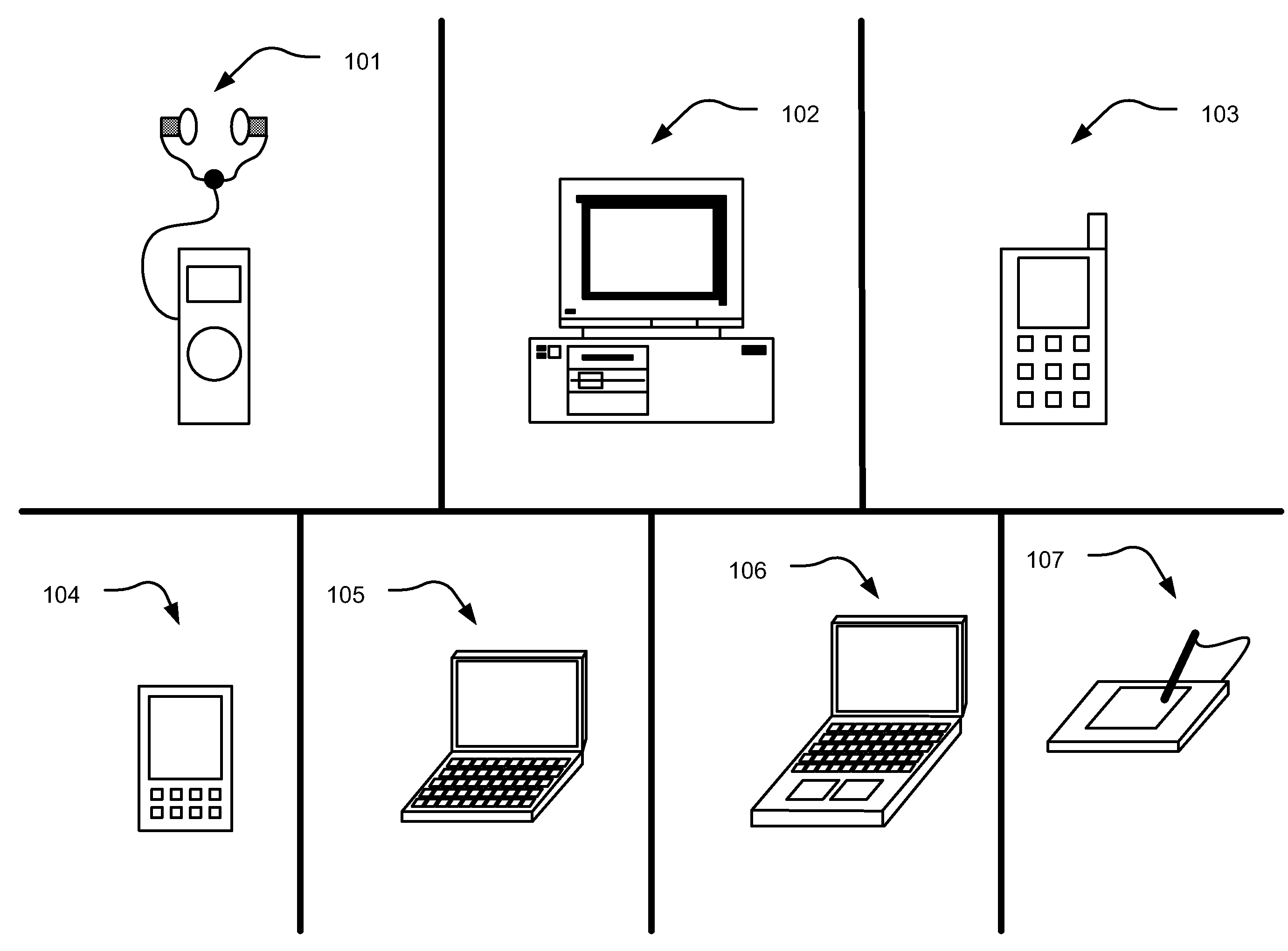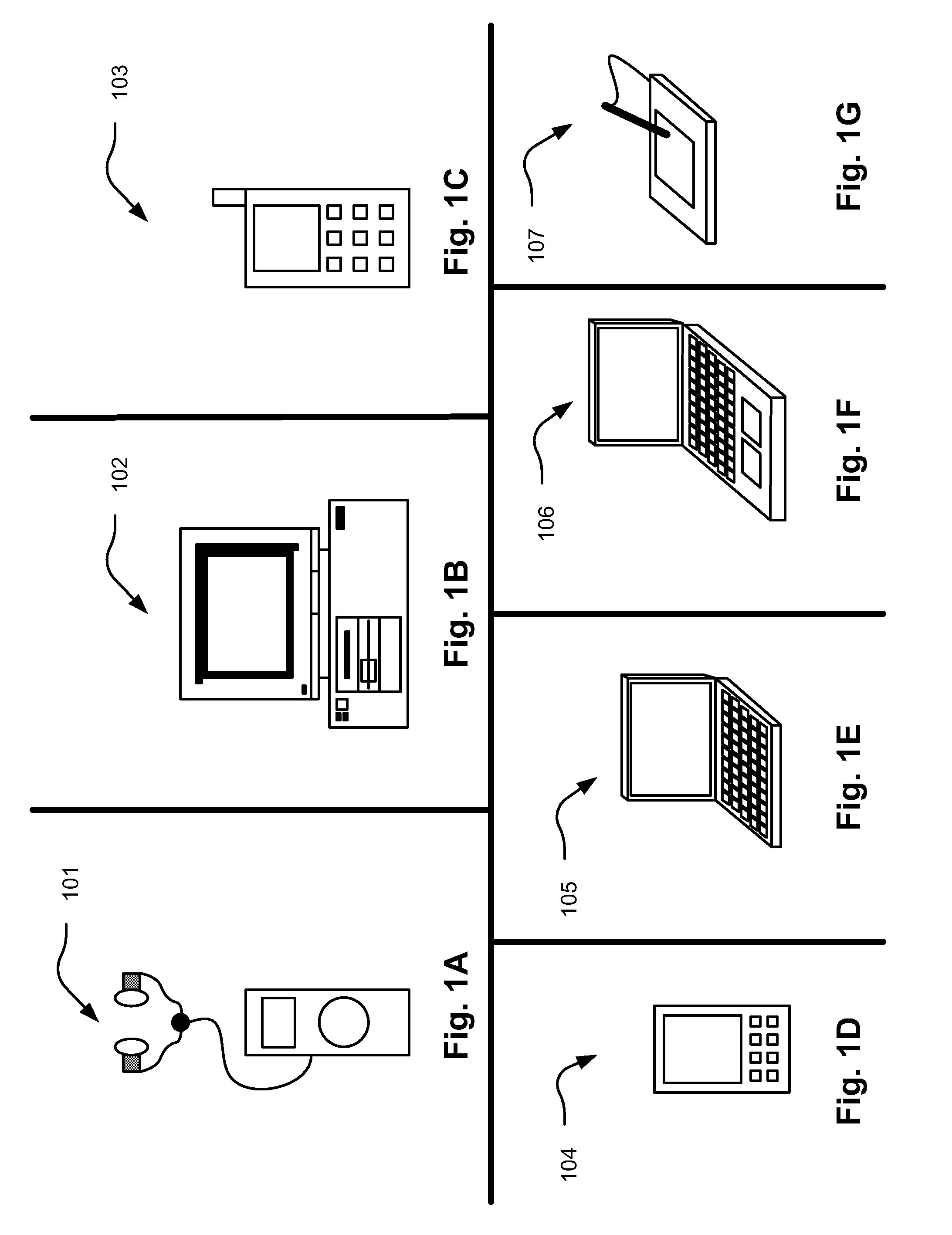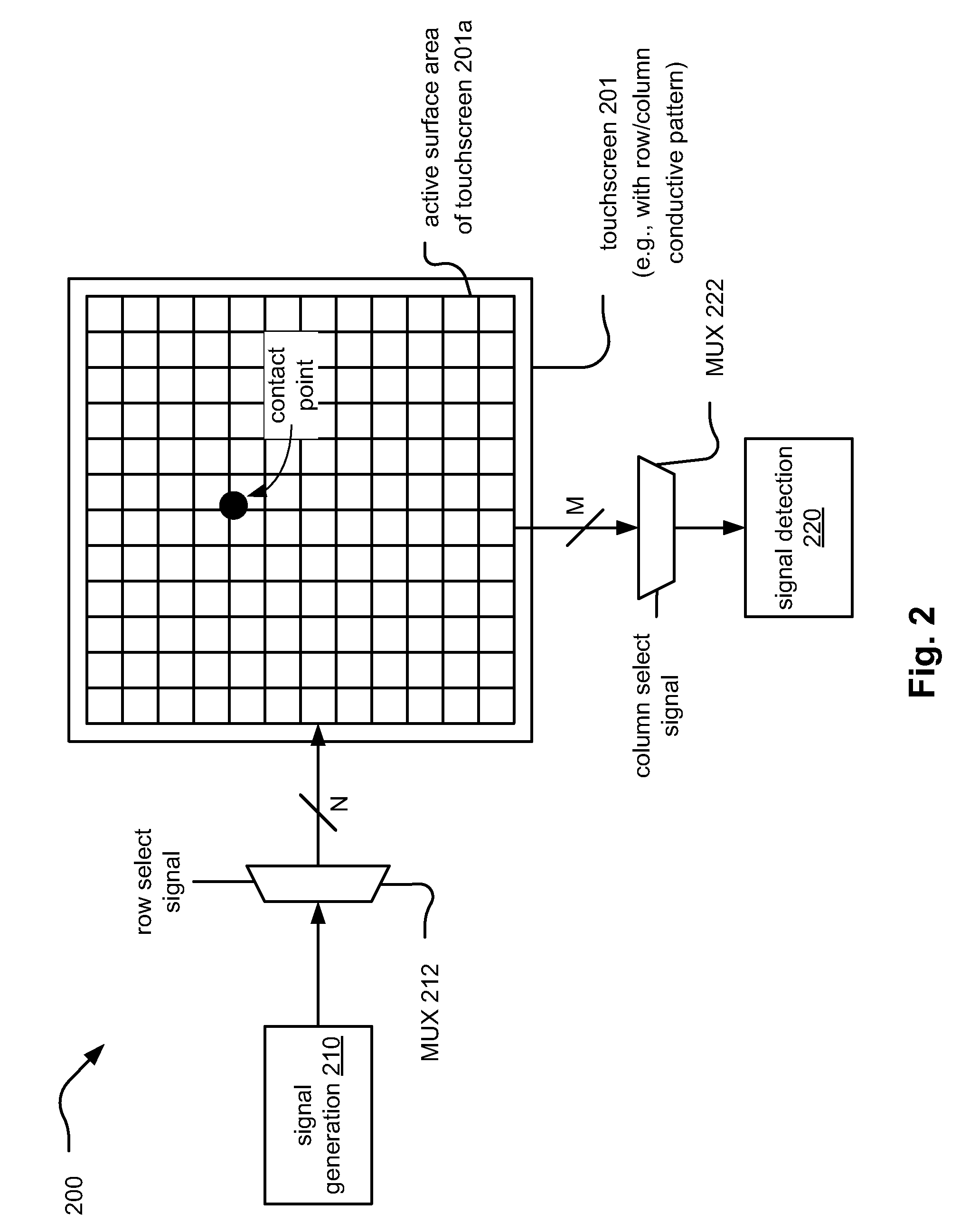Meshed touchscreen pattern
- Summary
- Abstract
- Description
- Claims
- Application Information
AI Technical Summary
Problems solved by technology
Method used
Image
Examples
embodiment 200
[0068]FIG. 2 illustrates an embodiment 200 of a touchscreen 201 in which cross point detection is performed to locate a user's interaction with the touchscreen. In some embodiments, an active surface area of the touchscreen 201a covers a slightly smaller portion of the touchscreen 200. For example, a border or perimeter around the active surface area of the touchscreen 201a may be employed.
[0069]A number of conductors forming rows and columns of a conductive pattern (e.g., indium tin oxide (ITO) as may be deposited on a substrate composed of polyester or other material) on one or more layers of the touchscreen. In some embodiments, a first portion of the conductive pattern (e.g., the columns) is disposed on a first layer, and a second portion of the conductive pattern (e.g., the rows) is disposed on a second layer; the first and second layer may be separated by a dielectric material in some embodiments. Alternatively, the row and column oriented conductors may be disposed on the sam...
embodiment 300
[0074]FIG. 3 illustrates an embodiment 300 of a touchscreen 301 in which zone detection is performed to location a user's interaction with the touchscreen. As with the previous embodiment, in some embodiments, an active surface area of the touchscreen 301a covers a slightly smaller portion of the touchscreen 300. For example, a border or perimeter around the active surface area of the touchscreen 301a may be employed.
[0075]This embodiment 300 differs from the previous embodiment, at least in that, a signal generation / detection module 310 is employed both to provide a signal to a particular row and to detect a change in the signal being provided to that particular row. The signal generation / detection module 310 operates cooperatively with a MUX 312 to apply a signal and detect that signal being applied to each of the rows and columns of the conductive pattern of the touchscreen.
[0076]When a user does interact with the touchscreen, an increased capacitance will be introduced correspon...
embodiment 400
[0083]Referring to embodiment 400 of FIG. 4, this diagram shows substantially complementary conductors aligned in a direction such that the conductors are spaced as closely to one another as allowed by the processing and manufacturing processes employed to make the touchscreen (i.e., placing adjacent conductors as close to one another as possible). The conductors may be viewed as being implemented in an active surface area of a touchscreen (e.g., where a user has the capability to interact with the touchscreen). The complementary alignment of these conductors indicates that they substantially cover the active surface area of a touchscreen. Of course, the conductors do have sufficient spacing or isolation between them so that they do not directly and electrically contact each other.
[0084]The spacing between the axial centers of adjacent conductors is referred to as the pitch (e.g., row pitch or column pitch when the conductors are aligned in rows or columns, respectively). Also, the ...
PUM
 Login to View More
Login to View More Abstract
Description
Claims
Application Information
 Login to View More
Login to View More - R&D
- Intellectual Property
- Life Sciences
- Materials
- Tech Scout
- Unparalleled Data Quality
- Higher Quality Content
- 60% Fewer Hallucinations
Browse by: Latest US Patents, China's latest patents, Technical Efficacy Thesaurus, Application Domain, Technology Topic, Popular Technical Reports.
© 2025 PatSnap. All rights reserved.Legal|Privacy policy|Modern Slavery Act Transparency Statement|Sitemap|About US| Contact US: help@patsnap.com



